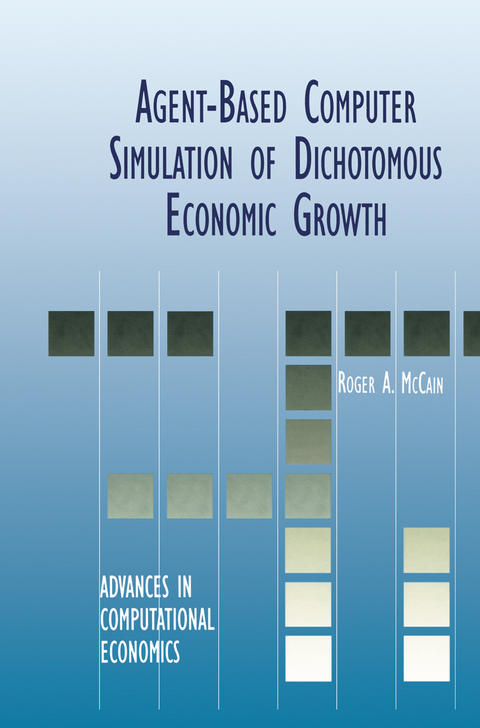
Agent-Based Computer Simulation of Dichotomous Economic Growth
Springer-Verlag New York Inc.
978-1-4613-7085-7 (ISBN)
The study is an exercise in comparative simulation. That is, the same family of growth models will be simulated under different assumptions about the nature of the learning process and details of the production and growth processes. The purpose of this procedure is to establish a relationship between the assumptions and the simulation results.
The study brings together a number of theoretical and technical developments, only some of which may be familiar to any particular reader. In this first chapter, some issues in economic growth are reviewed and the objectives of the study are outlined. In the second chapter, the simulation techniques are introduced and illustrated with baseline simulations of boundedly rational learning processes that do not involve the complications of dealing with long-run economic growth. The third chapter sketches the consensus modern theory of economic growth which is the starting point for further study. In the fourth chapter, a family of steady growth models are simulated, bringing the simulation, growth and learning aspects of the study together. In subsequent chapters, variants on the growth model are explored in a similar way. The ninth chapter introduces trade, with a spacial trading model that is combined with the growth model in the tenth chapter.
The book returns again and again to the key question: to what extent can the simulations `explain' the puzzles of economic growth, and particularly the key puzzle of dichotomization, by constructing growth and learning processes that produce the puzzling results? And just what assumptions of the simulations are most predictable associated with the puzzling results?
1 Introduction.- 2 Dichotomization Without Steady Growth: Baseline Simulations.- Figures for Chapter 2.- 3 Steady Economic Growth: The Cobb-Douglas Case with “Engineering- School” Human Capital.- Figures for Chapter 3.- 4 Simulations of Steady Economic Growth With a Cobb-Douglas Production Function.- Figures for Chapter 4.- 5 Growth with Non-Unitary Elasticities of Substitution.- Figures for Chapter 5.- 6 Learning-By-Doing and the Puzzles of Economic Growth: Survey and Interpretation.- Figure for Chapter 6.- 7 Learning by Doing and Dichotomous Development.- Figures for Chapter 7.- 8 Simulations with Irregular Neighborhoods.- Figures for Chapter 8.- 9 Boolean Trade Networks.- Figures for Chapter 9.- 10 Backwash and Spread: Trade Networks in A Space of Agents Who Learn by Doing.- Figures for Chapter 10.- 11 Concluding Summary.- References.- Appendix: Program Code.
| Reihe/Serie | Advances in Computational Economics ; 13 |
|---|---|
| Zusatzinfo | IX, 163 p. |
| Verlagsort | New York, NY |
| Sprache | englisch |
| Maße | 155 x 235 mm |
| Themenwelt | Literatur ► Lyrik / Dramatik ► Dramatik / Theater |
| Mathematik / Informatik ► Informatik | |
| Medizin / Pharmazie | |
| Wirtschaft ► Allgemeines / Lexika | |
| Wirtschaft ► Volkswirtschaftslehre ► Makroökonomie | |
| Wirtschaft ► Volkswirtschaftslehre ► Ökonometrie | |
| ISBN-10 | 1-4613-7085-X / 146137085X |
| ISBN-13 | 978-1-4613-7085-7 / 9781461370857 |
| Zustand | Neuware |
| Informationen gemäß Produktsicherheitsverordnung (GPSR) | |
| Haben Sie eine Frage zum Produkt? |
aus dem Bereich


